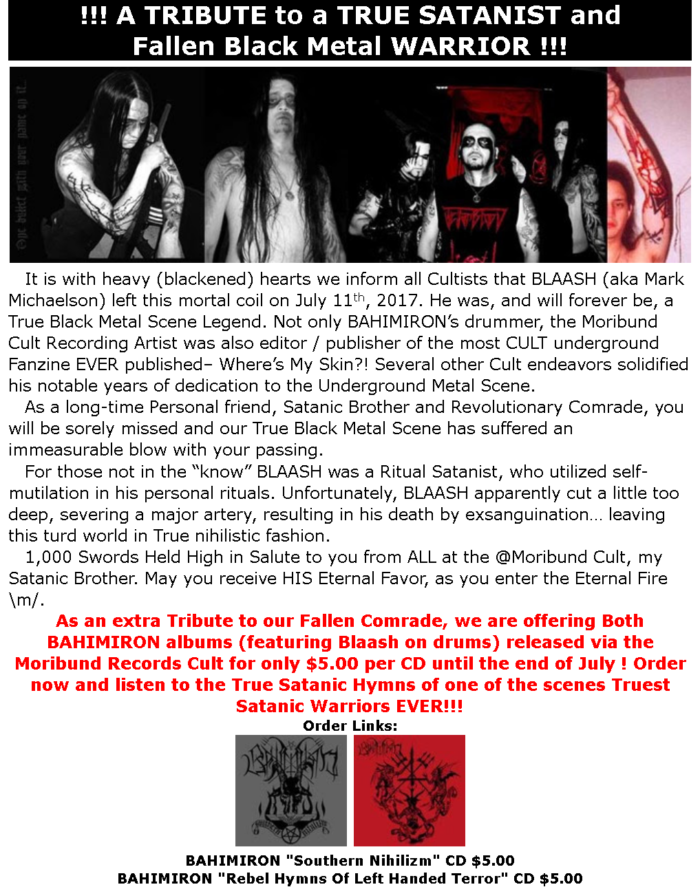
Vallenfyre – Desecration
If you can imagine a cross between newer Bolt Thrower, old Paradise Lost and recent Fleshcrawl, you would have a good basis for the rock from which Vallenfyre carve their death metal hybrid. They use the Swedish buzzsaw guitars and the kind of melodic hooks that would make Watain proud in that these riffs are simple and hard to get out of your head, but then use a layered style of riff and response that comes straight from old Paradise Lost, with fewer of the heavy metal touches. If this EP gets its pop influence from anywhere, it would be Brit electro. The riffs are reasonable, and while sparse in the longer song constructions, the band’s habit of treating them as phrases and thus giving them multiple endpoints creates a sombre and contemplative atmosphere. Looking forward to seeing what the full length will bring.

Pestilence – Doctrine
Attempting to keep up with the times, Pestilence make a Meshuggah-style version of a deathcore album and add in their trademark ecclectic tone-twisting jazz leads. As if thinking that fans now must be blockheads to like such music, Pestilence deliberately dumb down the music with lots of chanting verses and repetitive, ultra-simple riffs based on old heavy metal tonal patterns. They vary these up with breakdowns and interludes, using abundant percussive strumming to shake two chords into forty seconds of constant texture variation. This is well-executed and unlike their previous album, does not feel off-the-cuff; attention has been paid to making these songs flow well and stay together. However, like most djent and textural music, it’s almost binary and thus is exhausting from a mental perspective. If you can imagine Celtic Frost Monotheist combined with Meshuggah’s None and Coroner’s Grin, you have a good idea of what Pestilence is doing these days. As an improvement over the past, Doctrine gives me hope, but I still think these guys are best when making complex, twisted, ingenious old school death metal.

Antidote – Thou Shalt Not Kill
NYHC came in on the punk scale halfway to thrash, being very much based in the more extreme school of UK hardcore. This album of short, straight-up, anthemic songs belts out a paean to working class existence in New York by combining the catchy choruses of punk with the fast, nearly technical riffs of later UKHC. Vocals are eerily similar to what Kurt Brecht did in the same year with DRI, a youthful voice shouting itself breathless and yet managing to capture cadence and through it, the hook of the chorus. Guitars are minimal but pick more challenging rhythms in order to underscore the chorus and its lead-up in the fast ranted verse lyrics, giving these songs like early speed metal an insanely infectious quality that borders on frustration with how the message bores into the brain. This is almost like the Circle Jerks sped up 4x with the middle class faux angst translated into rage at the three-block area surrounding the squat.

Atman – Like Pure Unawaited Magic
This CD would stand a chance if it weren’t so goofy. The intrusion of operatic vocals at random times with maximum pretense and minimal musicality pretty much kills its chances of ever having people want to listen to it, but underneath it are good, simple minor key melodic riffs like early Abigor or Emperor simplified. Huge parts of this CD feel pasted together, as if the artist kept creating as many different elements as possible to extend a song, and many of the melodic riffs are too similar in structure for this to really take the top shelf, but it has moments that match the intensity described by the title.

Evil – Pagan Fury 1994-1996
Probably the only band that can compete with Ildjarn for turning the obvious into the profound, Evil are high-speed pneumatic drums with a languid bass following searingly distorted, simple riffs that rise into sublime three-note melodies. While this is well executed, this is all they have to offer; if you like Ildjarn and Blood, you’ll like this because it sounds like a cross between the two. Songs generally feature two grindcore riffs and a melodic black metal riff to unite them, which produces a sense of high energy potential flowing into a melancholic panorama that encompasses the moods previous.

Aosoth – III
The only underground trend to counter metalcore can probably be blamed on Thorns and the emergence of the 7-string guitar. In this style, open chords or oddball movable chords are strummed in quick sweeps to produce a wash of sonic possibility; this can give great power to a quality song, like the “sonic cathedral” approach of some classical composers, but with a directionless series of riffs it falls apart like later Mayhem. Aosoth strides the line, sometimes sounding like Portal or Molested in the harmonic possibilities unveiled, and other times sounding like an avantgarde acoustic band that somehow got the wrong guitar rig. The tempos and riff styles are compelling but songs often do not pick a direction other than restating their theme, which leaves us stranded in the sonic wash between what could be and what is.

Denial Fiend – They Rise
These guys have a unique intepretation of old school death metal. Imagine proto-death like early Master, but instead of faster tremolo riffs, the kind of muted strum chugging that distinguished bands like Exodus predominates during verses. A Misfits influence rides the vocals and the hookish rhythms of the choruses, but otherwise this is 100% straight-ahead metal. Like many of the caveman bands from the past, no silly punches are pulled here and it is refreshingly free of ornamentation and other artifice for the sake of disguising its basic simplicity. Percussion keeps energy high by creating a forward momentum that catches itself in tidy pockets that drive it forward like tempo changes; vocals are a hoarse yell with the riot delivery of Demolition Hammer or Exhorder.

Nunslaughter – Demoslaughter
This primitive, rhythmic metal is hard to justify as anything but five-note modal stripes bent into song through riffcraft, but for the old school primal style this band is at the top of the curve. Vocal rhythms and the ratio of riff rhythms used in transition resemble Deicide; some riff patterns approximate early Death; many of the more sing-song riffs evoke early Mayhem. Nunslaughter on some level understand the “soul” of death metal, in which a riff puzzle constantly expands in context like a winding journey that descends into profundity. Nunslaughter, despite having many holdover elements from early punk and radio-friendly heavy metal, understand this essence of underground metal. The result is primitive, at types awkward, but represents a surge of energy toward expressing an idea of such magnitude that among the 56 tracks offered here, much as on other micro-omnibus albums like Impulse to Destroy, Expositions Prophylaxe and From Enslavement to Obliteration, a complete vision of humanity and where it stands regarding its ultimate purpose is expressed.

Shrinebuilder – Shrinebuilder
To kill a darling, raise the knife above your head; there is no point pretending contrition or doubt. While sludge and stoner doom metal are the darlings of the industry at this point because they appeal to legions of new fans bleeding over from rock, they are not the heir to the throne of metal. In fact, they are taking it in the opposite direction back down the evolutionary ladder, a man devolving to chimpanzee to mouse. Since the inception of metal, industry has sought in vain for a way to adopt the rebellious image of metal and slap it on music basically indistinguishable from other rock; this way, they maximize profit by using interchangeable parts for the music and handling the “genre” through studio fakery. This album could easily be a U2 album. It is three-riff rock music, with one each for verse and chorus and one for the bridge or jam interlude, and as a result it relies heavily on repetition and basic harmony through which a “melody” (fragment of melodic scale + pentatonics) rambles. If you can imagine early Crowbar and later Eyehategod mixed up with some Sonic Youth or Nirvana, that roughly describes what you get here. It probably helps to be stoned so you have a short memory and cannot notice how repetitive this album is.

NYC Mayhem – Discography
It is not difficult to see why metalheads loved this band. Like Agnostic Front and the Cro-Mags, these guys are a hardcore band that shied away from the simplified rock songs of most punk bands and instead went for metal-like riffs, thrash tempos and a brutally post-human view of the world. Riffs are phrasal and have actual shape, unlike hardcore riffs which were boxier; there are plenty of moments that resemble Slayer or Destruction. These alternate with punk-style riffs returning to a single chord for stability instead of remaining open-ended or slammingly conclusive. Vocals fit the hardcore style of a masculine shout without the bassy tone of later voices. Song composition is closest to early COC, with an effort made to distinguish each song by use of varied structure and introductions, interludes and unique changes in tempo. They write great riffs, but never manage to keep momentum in each song, which causes a process of acceleration followed by breakdown that is somewhat exhausting to the listener. The decrepit garage production merges sounds together into an organic whole, showing us a window into history with grit on the edges.

Calciferum – The Beast Inside
Inside of this old school styled album lurks a new school sensibility: a random collection of riffs, vocals taking over from guitars as the primary instrument, bouncy rhythms and a theatrical sensibility imposed on top of the music not emanating from it. It is tempting to like this, but it’s too linear and too random at the same time. Underneath the slamming exterior is a good sense of binary pop, but its vocabulary is limited, which creates the effect of a listener thrown into a washing machine on spin cycle, ratcheted back and forth by a relentless and circular process.

Anu – Opus Funaerum
The intro to this album captures a vision of chaos rising from order that exists only in one other art form, which is structured noise music from Japan. What follows is pleasant black metal that sounds like Kvist and Gorgoroth had a baby. The band tend to make good use of the harmonic minor scale to achieve a lasting atmosphere, and write some pleasant basic riffs. The problem is that atmosphere is all that is offered here, and it is very 1994ish, right before black metal jumped the shark, meaning that there’s no exceptional direction. If you want competent and pleasant music that does not distinguish itself particularly, this will be OK, but this musical elitist requires more.

Agalloch – Marrow of the Spirit
Do you remember positive jazz and lite rock from the 1980s? Hopefully not: it was the crossover between Muzak, or elevator music, and the new jazz fusion and adult rock categories. Industry needed music that it could play in communal areas and not offend anyone, so they took the soul-searching out of jazz and rock and came up with two super-consonant, super-upbeat and uplifting formats that they then used to beat the heart out of us. Post-rock is the new positive jazz (Kenny G) and lite rock (Michael Bolton). However, in order to cater to a new generation of self-pity, the lords of industry have made this both minor-key and self-reflexively super-balanced, so it’s like uplifting music that tells you it’s not your fault and watches Napoleon Dynamite with you. It is impossible to distinguish post-rock from the audience who listen to it, who are indie-rockers and hipsters, or those who have found no meaning in life so they focus on themselves, and accessorizing their personalities with beaucoup “ironic,” “unique” and “different” things. Industry encourages them because they are perfect consumers who will quietly work as web designers their whole lives, stay single and keep buying entertainment products, and despite all their grumbling are only too happy to report to work. Agalloch make an interesting meshing of textures and styles in Marrow of the Spirit, and there are no musical grounds for criticism. Artistically, for all its attempts to be different, the underlying songwriting is more like regular indie rock music and so while it’s “unusual” for metal, it’s actually the usual thing when you look at music as a whole. Summary: Agalloch make great rock music and should drop the metal pretense and just get bigger than Dave Matthews, because their current style panders to insincere people and those so clueless they think novelty in style is more important than clarity and meaning in content.

Triptykon – Eparistera Daimones
Tom G. Warrior, although an artist of great talent, gets sidetracked into trying to “stay current.” This happened to Celtic Frost in the late 1980s, and it now happens with Triptykon, which tries hard to be modern metal with touches of Rammstein and Marilyn Manson yet keeping the underground honest morbidity. This impossible task results in Triptykon dumbing down their music through repetition and really obvious, repetitive choruses that rant out memes in raw form and pound them into our heads. Songwriting is good although directionless because all else has been shoved aside to keep those “catchy” ranty choruses, and some interesting melodies come of this, but I don’t want to listen to it. It’s annoying and reduces consciousness to a background hum because it’s so loud and repetitive. What we loved from Celtic Frost was the atmosphere; Triptykon is the anti-atmosphere. It’s too bad because if Tom G. looked honestly in the mirror, he’d see that he is loved for the quality and content of his music and not its style, so he should get more honest with the style even if it seems 20-30 years out of date. Who cares what the trends are? In three years they’ll be gone along with this album, and in 30 years kids will still be learning to play “Triumph of Death.”

Abraxas – Damnation
Nothing wrong with this band — standard late-model death metal, like Vader crossed with Devourment. Not bad but nothing particularly exciting. Overuse of “intensity” makes this monolithic, like reading a page of zeroes. Like the band named Damnation, it hammers too hard to achieve any kind of variation in which a story or drama could play out, and so the result is like Napalm Death’s “Scum” if the songs had been five minutes instead of ten seconds, and rigid instead of sloppy. Nothing is done wrong here but the whole does not add up to much of enduring power.

Decrepit Birth – Polarity
Someone crossed Cynic’s Focus, Death’s Human and modern technical death metal to get a fruity sounding progressive band embedded in the midst of blast and breakdown. Individual parts are great, the whole is hilarious and absurdly unclear on any kind of direction. In fact, it reminds me of modern society: the salesperson goes through the list and ticks off all that is required, and then it gets passed to the factory floor, where they bolt everything together and hope it flies. The result here is really goofy and entirely misses the grandeur and imagination of metal. Flee.

Bahimiron – Rebel Hymns of Left-Handed Terror
Against all odds, this band have reinvented themselves with a new sound. This new styling works because the band have both stripped-down what they do and focused on making every bit count. The songwriting sounds hasty but as if a very deliberate focus were placed behind each piece, so that the band knew what they needed and fought until they found it, even if it went rather quickly. Combining the Demoncy “Joined in Darkness” cum Profanatica “Profanatitas de Domonatia” sound of fuzzy, foreboding, inverse-march riffs with the remnants of the original Gorgoroth-inspired sound that propelled this band into focus, albeit with bits of the Southern style (Down, Eyehategod) and classic death metal mixed in, the new Bahimiron makes fast songs in the style of hardcore punk but gives them a uniquely metal vibe. They aim at being incomplete; the songs themselves are complete, but the emotional concept they express is one of partial completion. Plenty of speed and power in these riffs; no particularly groundbreaking variations occur, and the noisy lead guitar (Watain “Rabid Death’s Curse” style) creates no enduring atmosphere. Even the EP itself tapers off, bringing in a few speed metal riffs and even modern metal influences toward the end (blame Krieg’s latest) but the riffs wrap up in hard-hitting songs that are not scattered random thoughts and as a result, create a memorable listen. Glad to see these guys returning on a high note.
22 CommentsTags: abraxas, Agalloch, antidote, anu, aosoth, atman, bahimiron, calciferum, decrepit birth, denial fiend, evil, nunslaughter, nyc mayhem, pestilence, sadistic metal reviews, shrinebuilder, triptykon, vallenfyre
































